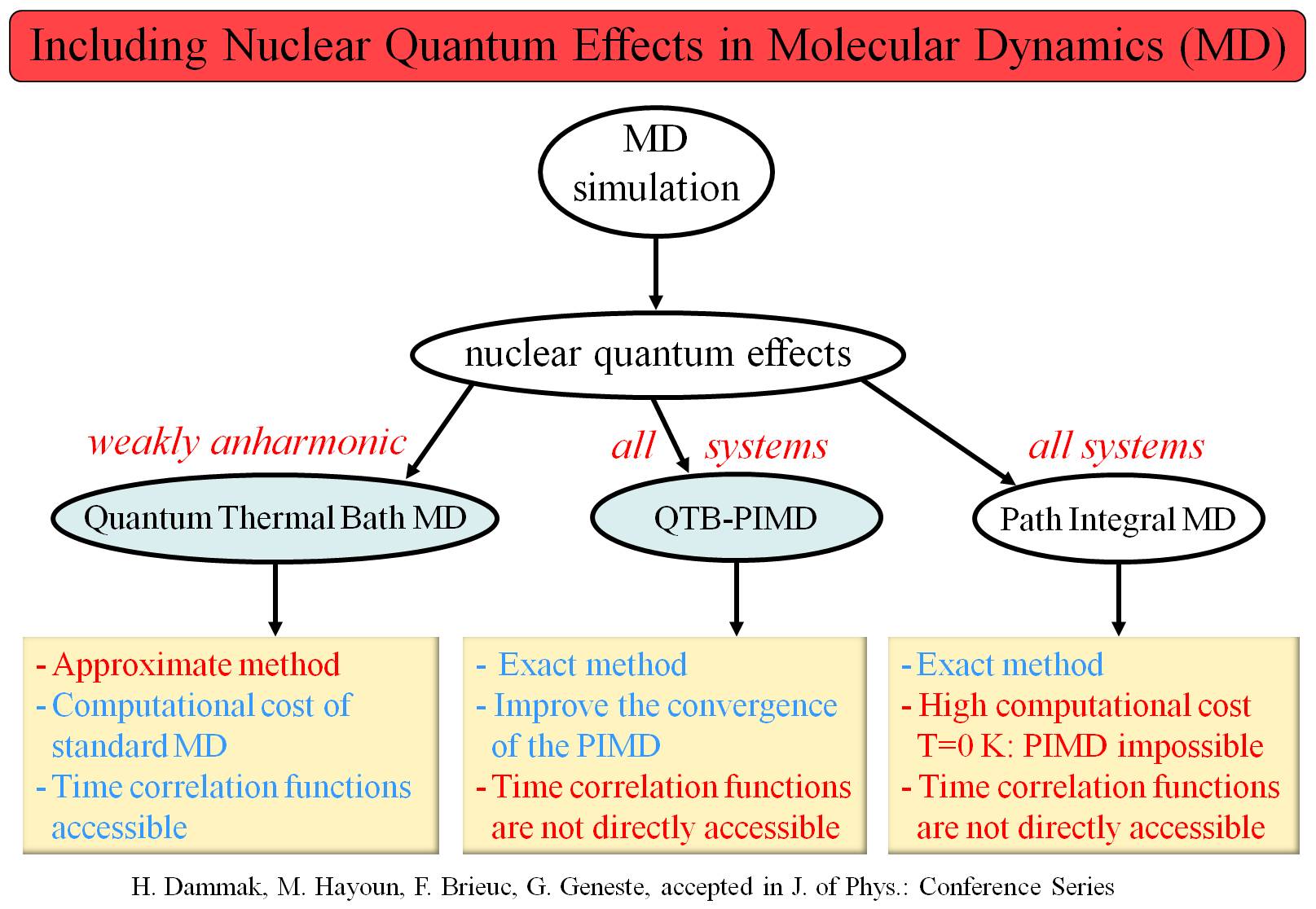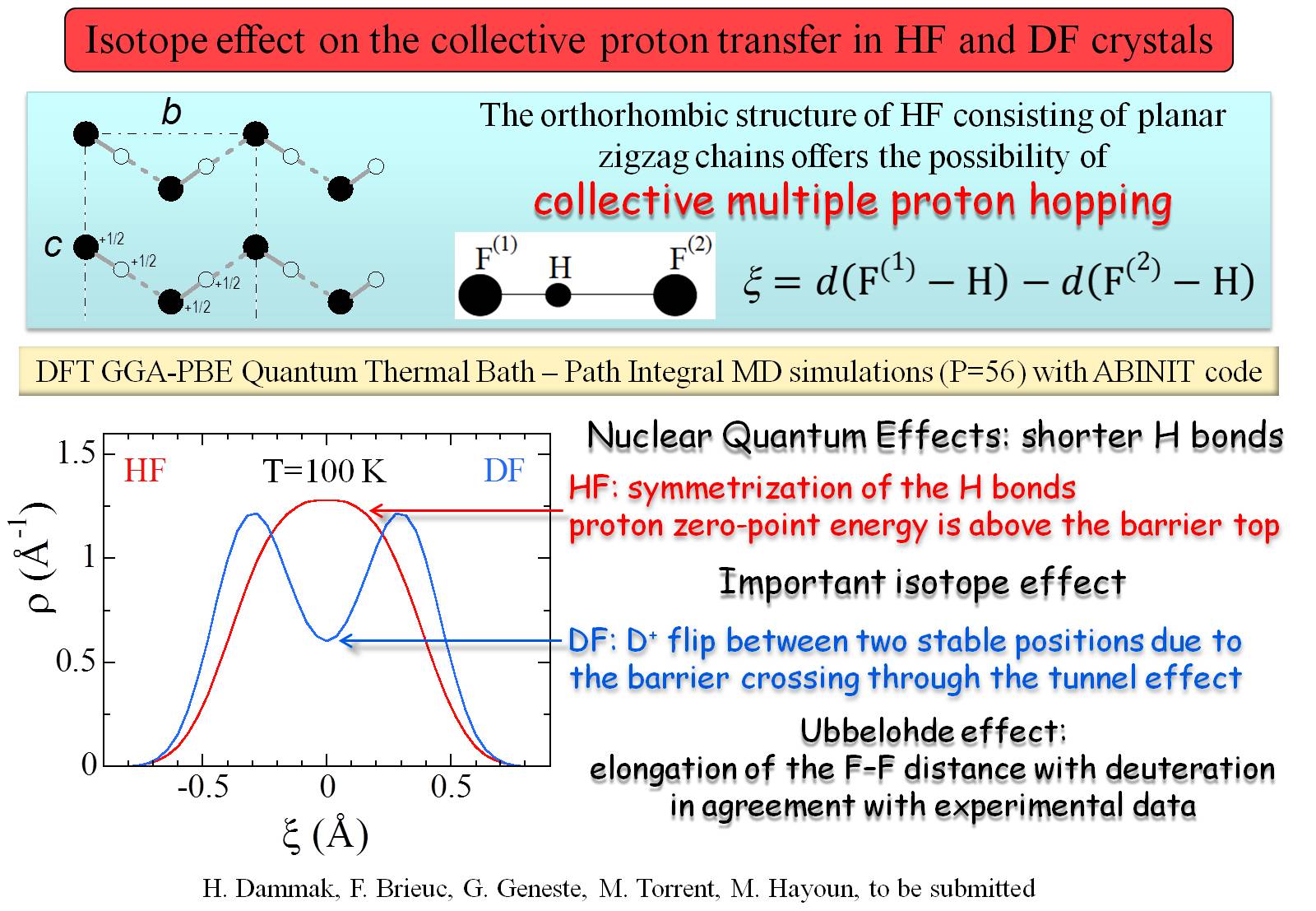Nuclear quantum effects in molecular dynamics simulations

The quantum thermal bath (QTB) molecular dynamics (MD) simulation method, developed in collaboration with CentraleSupélec in 2009 (PRL 103 (2009) 190601), takes into account nuclear quantum effects (NQE) and provides exact results in the case of purely harmonic systems. The main advantage of the method is that time correlation functions are directly accessible. For anharmonic systems, QTB-MD can fail due to zero-point energy leakage (ZPEL), which is the consequence of the coupling between vibrational modes. In this case, the energy distribution is intermediate between the quantum distribution and the classical homogeneous one. Weakly anharmonic systems can be successfully simulated by QTB-MD with a high value of the friction coefficient of the thermal bath, which suppress or reduce the ZPEL. Encouraging results (JCTC 12 (2016) 5688) have been obtained and it is convenient to check the phonon density of states. We also developed the QTB-Path Integral (PI) MD (JCTC 12 (2016) 1351), which is the combination of QTB with path-integral MD (PIMD), to take into account the NQE in strongly anharmonic systems. It allows a better convergence with the number of beads than PIMD. All these methods made it possible to study the phase transitions in BaTiO3 (PRB 87 (2013) 014113), the isotopic effects in LiH/LiD (J. Phys.: Condens. Matter 24 (2012) 435402), the HF/DF structures and the atomic diffusion of the proton in BaZrO3.



